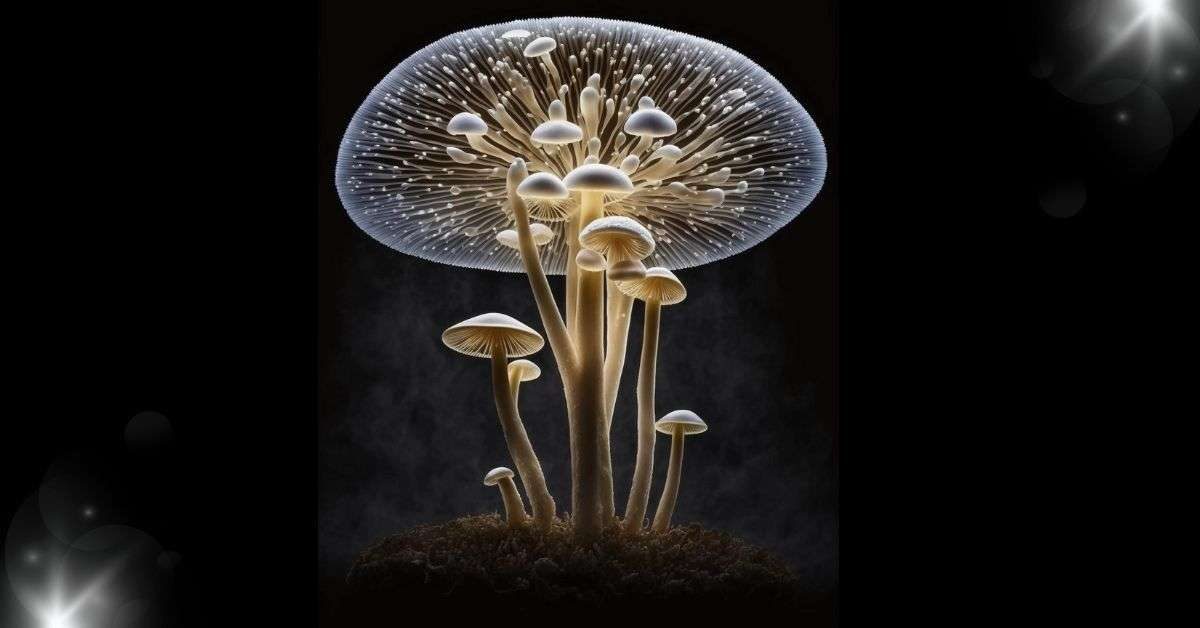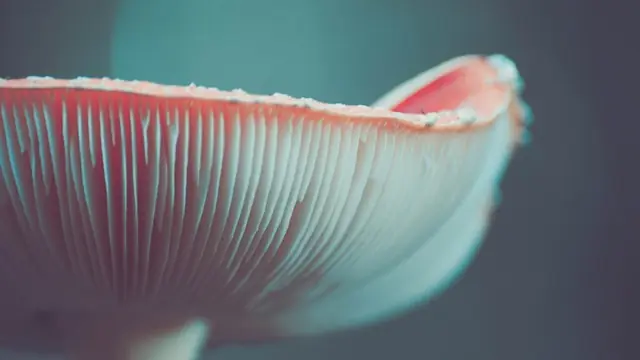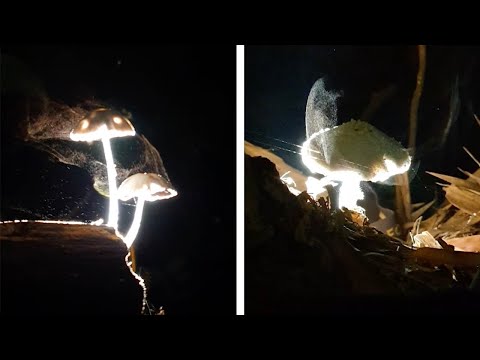
Mushroom spores are a vital component of the world’s mushroom population. From the common button mushroom to psilocybin mushrooms, these tiny particles are essential for mushrooms to grow and reproduce. This article offers an overview of what mushroom spores are, how they form, and their importance in the life cycle of mushrooms.
Mushroom spores represent an essential part of our natural environment that continues to benefit humans through their functional roles within ecosystems and numerous applications in medicine and cuisine. The economic importance of fungal spores cannot be understated. Spores can be used for commercial production and cultivation of different types of edible mushrooms for human consumption, as well as for medicinal purposes.

Mushroom spores are microscopic single-celled reproductive units found in mushrooms’ fruiting bodies. These spores contain genetic material necessary for the growth and development of new mushrooms.
Mushroom spores are an integral part of life on earth, providing many ecological and economic benefits. While they may seem small and insignificant, mushroom spores are highly important in both natural and human-made settings.
The importance of mushroom spores is undeniable when it comes to the environment:
Mushroom spores also offer several economic advantages for humans:

Mushrooms come in many shapes, sizes, and colors—and so do their spores. As a result, various mushroom spores can be found in nature, each possessing unique characteristics and functions.
The first type of mushroom spore is the basidiospore, typically produced by gilled mushrooms such as Psilocybe Cubensis or Panaeolus Cyanescens. These spores are usually darkly pigmented, allowing them to remain viable longer than other types. They also possess a sticky outer coating that aids in attachment and dispersal.
Another type of mushroom spore is the ascospore, produced by cup fungi such as morels or truffles. These spores are typically smaller than basidiospores and lack a sticky outer coating. As a result, they tend to disperse more efficiently and have shorter lifespans.
Some mushrooms produce what are known as aeciospores. They are generally longer-lived than both basidiospores and ascospores. In addition, aeciospores often possess an array of adaptations for survival in hostile environments, making them highly resistant to unfavorable conditions such as dehydration or extreme temperatures.
Basidiospores are the most common type of mushroom spore and are typically produced by gilled mushrooms such as chanterelles or shiitakes. These spores are round, darkly pigmented, and contain a sticky outer coating that aids attachment and dispersal. The formation of basidiospores is a complex process that involves the fusion of two nuclei within a cell known as a basidium. This fusion produces four haploid spores, which mature over time before being released into the environment.
The size and shape of basidiospores vary depending on the species of mushroom from which they originate, with some possessing larger and more elongated bodies than others. Additionally, these spores can include various adaptations for survival in hostile environments, making them highly resistant to unfavorable conditions such as dehydration or extreme temperatures.
Basidiospores play an important role in many ecosystems by providing essential nutrition to other organisms such as bacteria, fungi, and plants. They also serve as catalysts for decomposition by breaking down dead organic matter into simpler compounds that other organisms can use. As such, these tiny spores have an outsized impact on our planet’s delicate ecosystems and play a critical role in maintaining balance within them.
In addition to basidiospores, another type of spore found in mushrooms is the ascospore. These spores are formed within a cell known as an ascus. They are produced by non-gilled mushrooms such as puffballs or stinkhorns. Unlike basidiospores, which contain four haploid nuclei, ascospores only have one diploid nucleus.
The formation of these spores follows a similar pattern to basidiospores. Ascospore form from the fusion of two haploid nuclei within the ascus before being released into the environment. The size and shape of ascospores can vary depending on the species of mushroom from which they originate, with some possessing larger and more elongated bodies than others:
Asciospores also play an important role in many ecosystems by providing essential nutrition to other organisms such as bacteria, fungi, and plants. In addition, they help break down dead organic matter into simpler compounds that other organisms can use to maintain balance within delicate ecosystems. As such, these tiny spores significantly impact our planet’s ecosystems and must not be overlooked when considering their importance.
Mushroom spores are the reproductive cells of mushrooms, and they play an essential role in the life cycle of a mushroom. Spore formation begins with the production of basidiospores at the tips of specialized structures called basidia. These spores are then released from the basidia and dispersed into the environment to produce new mushrooms.
Spore formation is a complex process involving several stages, including meiosis and mitosis. During meiosis, two haploid nuclei fuse to form a diploid nucleus. This nucleus then divides by mitosis to form four daughter cells, each containing one haploid nucleus. The daughter cells then develop into either ascospores or basidiospores, depending on their species of origin.
Once formed, mushroom spores can be transported long distances through air currents or water droplets, allowing them to colonize new areas and spread their genes far and wide. In doing so, they help maintain genetic diversity amongst different populations of mushrooms and contribute to biodiversity on our planet.
Having discussed the formation of mushroom spores, it is crucial to understand their role in the life cycle of a mushroom. A mushroom’s life cycle begins with spores dispersing into the environment, where they seek suitable germination conditions. As the spores grow, they form mycelium, comprised of filaments and threads called hyphae. These hyphae form a network that serves as the foundation for further development.
Once established, the mycelia can produce reproductive structures such as mushrooms or other fruiting bodies, depending on the species. These fruiting bodies are made up of gills or tubes that contain thousands of basidia at their tips and are responsible for producing new spores. When environmental conditions become favorable again, these spores are released and sent forth to begin the process anew.
In this way, mushroom spore development plays an essential role in perpetuating the species through successive generations. Such adaptation has allowed mushrooms to thrive even in highly variable environments and remain a vital part of our natural ecosystems today.
The reproductive process of mushrooms is a fascinating one. It begins with spore dispersal, a critical component for perpetuating the species. Spores are released from the fruiting bodies of mushrooms, and when environmental conditions become favorable, they quickly settle in and form mycelia. From here, three distinct processes can take place that leads to successful mushroom reproduction:

Mushrooms are capable of producing spores through a variety of methods. The first is mushroom formation, which occurs when the mycelia have specialized structures called basidia. These basidia house the reproductive cells, eventually releasing spores into the environment. Another way spores can be produced through spore production, where fragmented pieces of mycelium form small packets that contain thousands of spores.
The production and release of these spores happen over a period of time and involves several stages. First, the reproductive cells start to swell and divide to create haploid nuclei. Next, these haploid nuclei fuse to form diploid nuclei before they enter meiosis and form four haploid daughter cells. Finally, each daughter cell produces a single spore that will be released into the environment when ready.
Mushroom spores range from about 2-4 micrometers across for small species like Coprinus comatus to 60 micrometers for large species like Agaricus bisporus. This wide range of size helps mushrooms disperse efficiently across long distances while still being able to settle in areas with favorable environmental conditions once they reach their destination.
There are also several morphological characters used to identify different mushroom spore types. These include the shape of the spore itself (round, oval, or elliptical), surface texture (smooth or warty), ornamentation (granular or reticulate), and color (white, yellow, or brown). Each spore type has its advantages – smooth spores can move more quickly through the air, while granular ones are better at settling into moist soil where they can germinate and grow into adult mushrooms.
Mushroom spores are an integral part of fungal reproduction and serve various functions in the process. To start, let’s look at four of the most critical functions of fungal spores:
Overall, fungal spores play an essential role in reproduction by allowing fungi to disperse efficiently across long distances and colonize new areas when the timing is right. In addition, protecting against environmental stressors and longevity help ensure that mushrooms will continue thriving despite changing climates or other unfavorable conditions.
Spore collecting is popular among mycologists and other mushroom enthusiasts, who often use various methods to obtain samples for examination. One way of collecting spores is by simply picking mushrooms in the wild and then making a spore print from the spores that fall from the mushroom gills. Another approach involves using sterile slides or agar plates, which can be used to transfer spores purchased from spore sellers online, or to make a spore syringe.
Mushroom spores are fascinating, vital components of the fungal life cycle that have a wide range of roles in the environment. Their production, dispersal, and germination allow for the survival and spread of mushrooms across different habitats. Collecting and studying these spores can provide insights into how fungi interact with their surroundings, helping us to understand these important organisms better.
Spore production is an integral part of mushroom biology, but it is also an area where further research is needed. As our knowledge increases, we may gain a greater understanding of the various ways mushrooms disperse their spores and the factors that influence this process. Such studies could help biologists to identify methods for conserving rare species or controlling pest fungi in agricultural settings.
In sum, mushroom spores offer numerous opportunities for exploration and discovery. Furthermore, their importance in nature makes them deserve further study to learn about these dynamic organisms and their place in our world.
Spores can sometimes contain toxins that can cause irritation or even illness if inhaled or ingested. For example, exposure to certain mushroom spores has been linked to allergies, asthma, and other respiratory problems in humans and animals.
However, not all types of mushroom spores are hazardous. Many edible mushrooms benefit health from their high levels of essential vitamins and minerals. In addition, most mushroom species produce harmless spores that are safe for human consumption; however, it is vital to research the type of spore before consuming them, as some varieties may still be hazardous.
Inhalation of mushroom spores can cause respiratory issues such as coughing, fever, nausea, vomiting, wheezing, hives, or rashes. In addition, exposure to large amounts of spores from mature puffballs can cause lycoperdonosis. Therefore, it is essential to prevent inhalation of mushroom spores as it can be detrimental to one’s health.
Mushroom spores can cause inflammation or disease in the lungs, such as hypersensitivity pneumonitis, however, they are unable to grow inside the lungs.
Yes, there are some species of mushrooms that contain poisonous spores. The most common of these are Amanita phalloides, Amanita bisporigera, and Amanita ocreata, which are known as the “death cap” mushrooms. These mushrooms contain the toxin amatoxin, which can cause severe liver and kidney damage if ingested.
To make edible mushroom spores, these steps can be taken:
The environment is an essential consideration as to how long spores will last. In a dry climate, some mushroom spores have been known to stay viable for decades. However, viability can be significantly diminished in as few as three weeks when kept in a damp environment. Additionally, factors such as temperature and humidity may also affect the lifespan of mushroom spores, with higher temperatures often decreasing the shelf life of the spores. In contrast, higher humidity levels may increase it.
The success rate of germination also affects mushroom spore longevity; if most spores fail to germinate after a certain period, then they are likely to become non-viable due to age or environmental conditions.
Spore storage is a crucial step in cultivating mushrooms, as it helps ensure maximum viability of the spores and thus increases the chance of successful germination. Several factors should be considered when deciding how to properly store mushroom spores, including temperature, humidity, and light exposure.
Temperature plays a significant role in preserving spore viability; temperatures too high or too low can cause substantial damage or even complete loss of spores. Low temperatures are generally preferred for storing mushroom spores, as this slows down metabolic activity while allowing some growth. A refrigerator set at four °C (39°F) is ideal for storing mushroom spores.
Humidity is also crucial in preserving spore viability; mushroom spores require a specific moisture level to remain viable. Too much humidity can cause mold or fungal growth, which can destroy the stored spores, so it is important to keep relative humidity levels low. The ideal relative humidity for storing mushroom spores is 40-50%. If a refrigerator is used for storage, placing a desiccant inside may help maintain proper humidity levels.
Light exposure should also be limited when storing mushroom spores; direct sunlight can cause DNA damage and significantly reduce spore viability. Storing them in opaque containers or aluminum foil or keeping them out of direct sunlight will help preserve their quality over time.
In conclusion, mushroom spores are an essential part of nature’s cycle, and humans have been able to take advantage of their benefits for centuries. They are not dangerous if handled correctly and can be utilized in many agricultural endeavors. By understanding how long they last and how to store them properly, mushroom spores will continue to provide valuable services to farmers worldwide.